Tesla Model 3: Top Alternatives for 2024
January 15, 2024
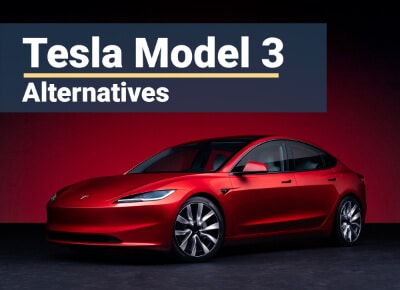

Rich Taber has nearly three decades of professional writing experience, including eight years as an automotive columnist for The Standard-Times newspaper, seven years on staff at WheelsTV as a scriptwriter, production manager, and editorial vice-president, and five years as CEO of RPM News Weekly. He has written extensively for numerous regional and local publications and developed public relations products for many non-profit organizations. Having studied both engineering and liberal arts at the University of Notre Dame and worked in audio/visual services, electronic sales, graphic design, and event and entertainment production, he brings a well-balanced skill set to his automotive writing.
The Tesla Model 3 continues to dominate the under-$50,000 mid-size sedan and hatchback EV segment.
Its success is attributed to a combination of performance, technology, and Tesla's extensive Supercharger network.
However, the competition has intensified, offering consumers viable alternatives that challenge Tesla's dominance in the EV market.
Table of Contents
Why Consider a Tesla Model 3 Alternative?
Considering alternatives to the Tesla Model 3 can be appealing due to certain weaknesses of the Model 3, such as its interior quality, which some may find lacking compared to luxury competitors like the BMW i4 and Mercedes-Benz EQE.
The reliance on a central touchscreen for most controls can be less intuitive for some users, unlike the Polestar 2's Google Android Automotive OS.
Additionally, the Model 3's design compromises on rear visibility and comfort, areas where alternatives like the Hyundai IONIQ 6 excel with more spacious rear seating.
Tesla's direct sales model and service network have also received mixed reviews, prompting some buyers to prefer the traditional dealership experience offered by established brands.
Tesla Model 3 Top Competitors Comparison Summary
Polestar 2 vs Tesla Model 3: The Polestar 2, with its unique blend of luxury, performance, and sustainability, presents a compelling alternative to the Model 3. It offers a choice between a more economical single-motor variant and a high-performance dual-motor setup. The Polestar 2 distinguishes itself with a vegan interior and the Google Android Automotive OS, providing a rich infotainment experience without relying on a smartphone.
BMW i4 vs Tesla Model 3: The BMW i4 caters to performance enthusiasts transitioning to electric vehicles. With options ranging from a single-motor rear-drive setup to a powerful dual-motor all-wheel-drive configuration, the i4 combines BMW's renowned driving dynamics with electric efficiency. Its luxurious interior and advanced technology, including the new "Live Cockpit," make it a strong contender against the Model 3.
Mercedes-Benz EQE vs. Tesla Model 3: The Mercedes-Benz EQE positions itself as a more upscale alternative, bridging the gap between the Model 3 and the higher-end Model S. With its luxurious features, advanced technology, and the option for a stunning Hyperscreen dashboard, the EQE targets buyers seeking a premium electric vehicle experience without stepping up to Tesla's flagship sedan.
Hyundai IONIQ 6 vs Tesla Model 3: The Hyundai IONIQ 6 is set to be a formidable challenger to the Model 3, offering an estimated maximum range of 340 miles and rapid charging capabilities. Its aerodynamic design and advanced technology, including OTA firmware updates, position the IONIQ 6 as a highly competitive option for buyers prioritizing efficiency and innovation.
1. Polestar 2
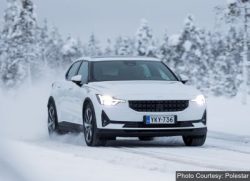 Performance: Both offer single and dual-motor setups, with the Model 3 providing a balance of efficiency and performance. The Polestar 2's dual-motor Performance Pack variant is a direct competitor in terms of acceleration and handling.
Performance: Both offer single and dual-motor setups, with the Model 3 providing a balance of efficiency and performance. The Polestar 2's dual-motor Performance Pack variant is a direct competitor in terms of acceleration and handling.
Technology: The Model 3 is known for its minimalist interior and reliance on a central touchscreen for most functions. Polestar 2 introduces the Google Android Automotive OS, offering a rich infotainment experience without needing a smartphone connection.
Luxury: While the Model 3 has a minimalist approach to luxury, the Polestar 2 offers a vegan interior and a design that borrows from Volvo's reputation for comfort and build quality.
Value: Both vehicles offer competitive pricing, but the Polestar 2 may appeal to buyers looking for a more traditional luxury feel and sustainability-focused features.
2. BMW i4
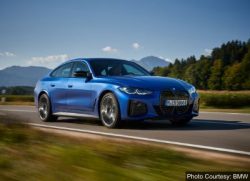 Performance: The i4, especially in its M50 guise, competes closely with the Model 3's Performance variant, offering exhilarating acceleration and dynamic handling.
Performance: The i4, especially in its M50 guise, competes closely with the Model 3's Performance variant, offering exhilarating acceleration and dynamic handling.
Technology: BMW's "Live Cockpit" and the iDrive system in the i4 provide a tech-rich environment that rivals the Model 3's technology offerings.
Luxury: BMW's i4 edges out with more traditional luxury elements, including power front sport seats and a more conventional luxury interior design.
Value: The i4 may come at a premium, especially the higher-end M50 model, but it offers a blend of performance and luxury that appeals to BMW enthusiasts and those looking for an electric vehicle with a sporty edge.
Current BMW Deals & Incentives
You may qualify for deals and incentives, check out this month's BMW deals.
3. Mercedes-Benz EQE
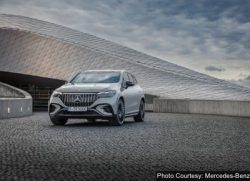 Performance: The EQE offers a comfortable and refined driving experience, though it may not match the Model 3's Performance variant in terms of outright acceleration.
Performance: The EQE offers a comfortable and refined driving experience, though it may not match the Model 3's Performance variant in terms of outright acceleration.
Technology: Mercedes-Benz's Hyperscreen in the EQE is a standout feature, offering a futuristic dashboard that surpasses the Model 3's single-screen setup in terms of visual impact.
Luxury: The EQE takes the lead in luxury with high-end materials, advanced features like the Burmester audio system, and a focus on comfort that is typical of Mercedes-Benz.
Value: Positioned above the Model 3 in terms of price, the EQE targets buyers looking for a premium electric vehicle experience with the cachet of the Mercedes-Benz brand.
Current Mercedes-Benz Deals & Incentives
You may qualify for deals and incentives, check out this month's Mercedes-Benz deals.
4. Hyundai IONIQ 6
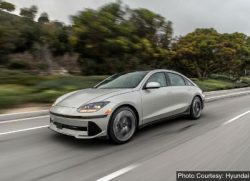 Performance: The IONIQ 6 is expected to offer competitive performance, with a focus on efficiency and rapid charging capabilities that challenge the Model 3.
Performance: The IONIQ 6 is expected to offer competitive performance, with a focus on efficiency and rapid charging capabilities that challenge the Model 3.
Technology: Hyundai's commitment to OTA updates and a streamlined, tech-forward interior may appeal to buyers looking for an innovative and connected driving experience.
Luxury: While not traditionally luxurious, the IONIQ 6's interior design and features are expected to offer a modern and comfortable environment.
Value: With an estimated maximum range that rivals or exceeds the Model 3's, the IONIQ 6 may offer exceptional value for buyers prioritizing range and charging speed.
Current Hyundai Deals & Incentives
You may qualify for additional deals and incentives, check out this month's Hyundai deals.
Conclusion
In summary, while the Tesla Model 3 remains a benchmark in the EV segment, each competitor brings its own strengths to the table. T
The Polestar 2 and BMW i4 offer alternatives with a focus on performance and luxury, the Mercedes-Benz EQE adds a layer of premium features and design, and the Hyundai IONIQ 6 promises cutting-edge technology and efficiency.
Buyers now have a range of compelling options to consider based on their priorities in performance, technology, luxury, and value.
Frequently Asked Questions
What vehicle is the best alternative to the Tesla Model 3?
The answer will be based on your specific needs and lifestyle. A comparison such as this one offers a starting point for your research by narrowing down the choices in the growing marketplace of electric vehicles to a handful of close competitors based on key factors. We recommend starting with the Polestar 2.
What should I expect to pay for a new all-electric vehicle such as a Tesla 3?
Finding an EV priced under $50,000, such as an entry-level Tesla 3, has become easier as more automakers have launched competitive EVs in the last couple of years, with more on the way in 2024. Keep in mind that many will be eligible for tax refunds that will save a buyer thousands of dollars.
Posted in Car Buying Tips, Car Research & Comparisons |







